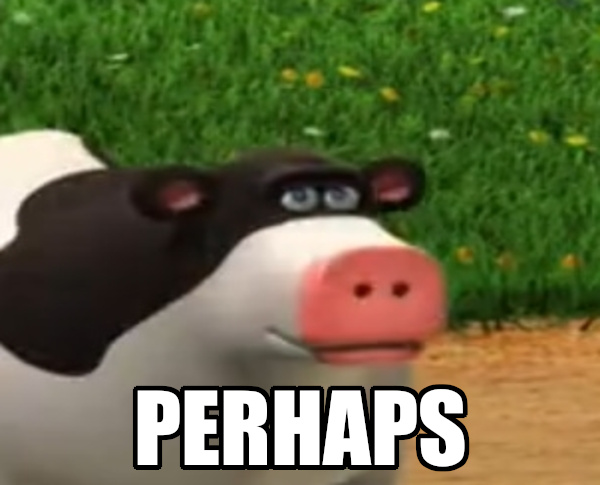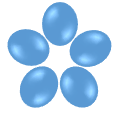@Cha and @doomlightning, thanks for joining!
Now that I have five players, I guess it is time to start the forum game!
On a distant piece of the cosmos, there was a G3V type star named Phyade I, similar to to 16 Cygni. G3V type stars have 99% the mass of the sun, a radius of 1.002 Sun’s, 98% Sun’s luminosity, a temperature of 5,720 degrees K (50 degrees K less than the Sun), and a color index of 0.66 compared the Sun’s color index of 0.65. So in effect, very similar to the Sun.
Approximately 1.5 AU, or 227,939,366 km from this G3V star, a planet had formed orbiting this star. This planet, named Treerilia, had 5% more mass than the Earth. Like the Earth, it had a fledgling atmosphere and oceans, a similar axial tilt, and it had a moon.
Unlike the Earth, Xanrillon was approximately the size of Mars, and almost twice its mass. In effect, it was like a binary system. Just like Mars in the early Solar System, Xanrillon also has a fledgling atmosphere and oceans. It orbits within Treerilia’s sphere of gravitational influcence, but far enough away that any potential Plate Tectonics on Treerilia are minimally affected.
This is where the story of life begins. Treerilia, a 13-patch ocean world with very little land. It makes sense, since the whole system is only 500 million years old. The potential continents on Treerilia have yet to form, with only small islands poking through the vast world ocean.
Turn 0
Patches:
Levaunian Tidepool
Physical Conditions
Temperature: 23 degrees Celsius, Pressure: 20 bar, Light: 100% lux (100% lux at noon)
Atmospheric Gases
Oxygen: 0%, Nitrogen: 60%, Carbon Dioxide: 10%, Other Gases: 30%
Compounds
Hydrogen Sulfide: 0, Ammonia: 16, Glucose: 5, Phosphate: 20.006, Iron: 2.401
Species:
Primum thrivium
Mutations: none
Generation: 1
Population: 100
Color: #ffffffff; RGB: 255,255,255
Behavior:
Aggression: 100, Opportunism: 100, Fear: 100, Activity: 100, Focus: 100, Cannibalism: 0
Membrane Type: Single, Membrane Rigidity: 0
Base Speed: 0.34974357, Base Rotation Speed: 0
Base Hex Size: 0.5
Organelles: Cytoplasm
Organelle Reproduction Order: 1) Cytoplasm (0,0)
Organelle Position: (0,0)
Organelle Rotation Position: 1
Turn 0 Summary:
In the warm Levaunian Tidepool, Primum thrivium emerged. However, this brave new world is no easy place for survival. Despite seemingly being a haven of resources, it is no mere resource buffet. The new phenomena of life nearly became extinguished when Primum thrivium died, since it could not find sufficient Glucose. It lost 60 population, brining its population down to 40. The primordial species almost died a second time in its search for Ammonia and Phosphate, with the setting Phyade star begetting night. In the cover of total darkness, surrounded by the frenzy of frenetic siblings, one member of the species was able to gather enough resources to split as its health was slowly being depleted.
What new intermediates will emerge in the next 25 million years?
@CatSquared @JustaDumbThriver @aah31415 @Cha @doomlightning Here are the intermediates you can choose. Unfortately, only one sucessful mutation actually occured, while the other three failed to mutate. This leaves players with two viable options to choose. In this case, I will allow people to choose the same thing due to the lack of options.
Options:
Base Species
Mutant 1,3,5:
Name: Primum thrivium
Generation: 2
Population: 40
Color: #ffffffff; RGB: 255,255,255
Behavior:
Aggression: 100, Opportunism: 100, Fear: 100, Activity: 100, Focus: 100, Cannibalism: 0
Membrane Type: Single, Membrane Rigidity: 0
Base Speed: 0.34974357, Base Rotation Speed: 1000, Base Hex Size: 0.5
Organelles: Cytoplasm
Organelle Reproduction Order: 1) Cytoplasm (0,0)
Organelle Position: (0,0)
Organelles Rotation Position: 1) 1
Mutant 4
Name: Primum thrivium luminis
Generation: 2
Population: 40
Color: #ffffffff; RGB: 255,255,255
Behavior:
Aggression: 100, Opportunism: 100, Fear: 100, Activity: 100, Focus: 100, Cannibalism: 0
Membrane Type: Single, Membrane Rigidity: 0
Base Speed: 0.24, Base Rotation Speed: 1000, Base Hex Size: 1.0
Organelles: Cytoplasm, Proteorhodopsin
Organelle Reproduction Order: 1) Cytoplasm (0,0), 2) Proteorhodopsin (1,0)
Organelle Position: 1) (0,0), 2) (1,0)
Organelles Rotation Position: 1) 1, 2) 2
A new Organelle has mutated!
Proteorhopsin is a light-induced proton pump, giving ATP equivalent to 6 times % of Lux (so 100% gives 6 ATP).
Extinct Organisms:
Mutant 2 (extinct)
Name: Primum thrivium perforatium
Generation: 2
Population: 40
Color: #ffffffff; RGB: 255,255,255
Behavior:
Aggression: 100, Opportunism: 100, Fear: 100, Activity: 100, Focus: 100, Cannibalism: 0
Membrane Type: Single, Membrane Rigidity: 0
Base Speed: 0.24, Base Rotation Speed: 1000, Base Hex Size: 1.0
Organelles: Cytoplasm, Perforator Pilus
Organelle Reproduction Order: 1) Cytoplasm (0,0), 2) Perforator Pilus (-1,1)
Organelle Position: 1) (0,0), 2) (-1,1)
Organelles Rotation Position: 1) 1, 2) 3

